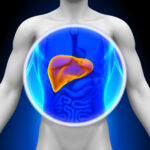Fatty Liver Disease More Common Among People With PH

Chinnapong/Shutterstock
Non-alcoholic fatty liver disease (NAFLD) — an umbrella term for conditions caused by a buildup of fat in the liver — is about twice as common among people who have pulmonary hypertension (PH) than among those who do not, a review of almost 19,000 people has shown.
The finding raises awareness about the coexistence of liver conditions and argues for potential liver-screening programs in patients with PH, especially in women and those older than 80.
The study, “Pulmonary hypertension is associated with an increased incidence of NAFLD: A retrospective cohort study of 18,910 patients,” was published in the Journal of Internal Medicine by a team of researchers from Germany.
As more and better treatments become available for PH, patients tend to live longer. But growing older may come with possible complications related to the disease. A common complication of PH is heart failure. However, other manifestations not related to the heart also may occur, including NAFLD.
“Close associations of cardiac and hepatic [liver] diseases are well established as many systemic diseases or risk factors affect and damage both organs,” the researchers wrote. “However, it has remained largely unclear whether there is an association between PH and the development of NAFLD,” they added.
To address this point, the team decided to review the medical records of
a large number of patients to see if they could provide a link between PH and the development of NAFLD within 10 years after a first diagnosis of PH.
Using a database that covers nearly 3% of all outpatient practices in Germany, the study included a total of 9,455 patients with PH who were followed in general and internal medicine practices from January 2005 to December 2019. Patients with PH were matched by age, sex, number of yearly medical visits, and relevant coexisting conditions, to a group of equal size without PH.
The mean age of each group was 72.3 years; 56.7% were women and 43.3% were men. The average number of annual visits to a general practitioner was 5.1.
Among patients with PH, 33.9% had diabetes, 15.8% had obesity, 42.5% had a disease related to the production, breakdown, or storage of fats, and 42.2% had a diagnosis of heart failure. These figures were similar in the group of patients without PH.
However, there were about twice as many patients with NAFLD among those with PH than among those without PH (7.3% versus 3.5%).
PH was linked to new cases of NAFLD. Among people with PH, the risk of NAFLD was almost doubled in women and more than tripled in those older than 80.
The researchers also looked at liver cirrhosis, a late stage of liver disease that can have many causes. They found that the proportion of patients with liver cirrhosis tended to be higher among those with PH than among those without PH (1.4% versus 1.1%). However, that difference was not statistically significant.
According to the scientists, the lack of significant association between PH and liver cirrhosis most likely was the result of the small number of patients diagnosed with cirrhosis during follow-up.
The finding “suggests that PH is associated with an increased risk for the development of NAFLD,” the researchers wrote. “The identification of PH as an independent risk factor for the development of NAFLD is an important step for the initiation of further studies on this issue,” they concluded.








